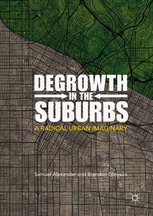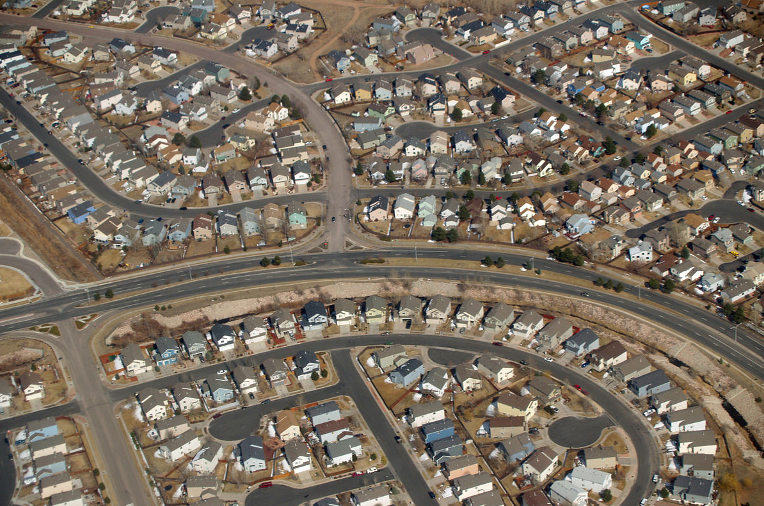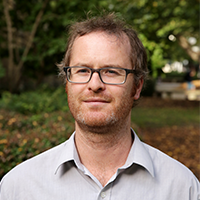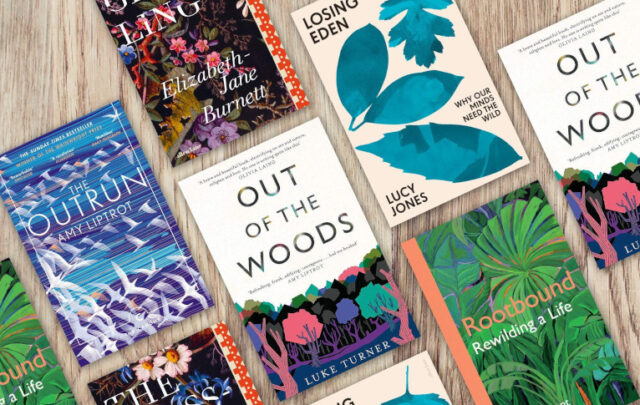 Ed.note: This post is an excerpt from Chapter 1 of Samuel Alexander and Brendan Gleeson’s new book Degrowth in the Suburbs: A Radical Urban Imaginary. You can find out more about the book on the publishers’ website here.
Ed.note: This post is an excerpt from Chapter 1 of Samuel Alexander and Brendan Gleeson’s new book Degrowth in the Suburbs: A Radical Urban Imaginary. You can find out more about the book on the publishers’ website here.
Prelude: The Great Resettlement
This book opens, as it must, by acknowledging that the human species stands at the precipice of self-made destruction. At the very hour when modern humanity arrived at the pinnacle of triumph—a global market economy promising riches for all—the skies have been darkened by the terrible spectres of ecological and social threat. Global warming is only one of these storm clouds, but this alone has the potential to lay waste to our species, as well as most others. At the same time, vast oceans of debilitating poverty surround small islands of unfathomable plenty, exposing the violent betrayal of the growth agenda, euphemistically (or just deceptively) known in public discourse as ‘sustainable development’. This is a race leading towards an abyss, both enabled and entrenched by a sterility of imagination.
The late German scholar Ulrich Beck spoke of how triumph and crisis simultaneously emerge and remerge in a world pervasively and continuously remade by capitalist modernisation. Beck cast us in an age of unprecedented global risk marked by a threat that seems integral to capitalism itself: the relentless drive to expand productive capacity without limit on a finite biosphere, inevitably producing a global society wracked by the agonies of ‘…self-dissolution, self-endangerment and self-transformation’ (Beck 2009: 163). The dual meaning of ‘dissolution’ presents itself here as a particularly apt signifier for our age, denoting both the ending of something, and on bankrupt terms. As the global economy trembles under the burden of its own excesses, we see the self-declared triumphs of capitalism coming home to roost in the darkening ecology of the Anthropocene.
The modern conversation has fixed progressively on this great contradiction of human development. Narratives collide. Triumph is reread as calamity, and progress retold as regress. There were foretellings. Karl Marx and Friedrich Engels (1985 [1848]: 85–86) scorned the boasts of the industrial bourgeois who ‘like the sorcerer… is no longer able to control the powers of the nether world whom he has called up by his spells’. Optimists still abound, including those heralding the dawn of a new urban age. They enthuse for an epochal opening towards the ‘green growth’ or ‘smart growth’ of cities and their underlying economies, while others, like philosopher Slavoj Žižek (2012), in his book Living in the End Times, hear the siren cry of closure in the mounting testimonies of human and natural default. The spectre of Apocalypse is hardly new, but its horsemen, as Žižek points out, have never been more terrifyingly present.
We write at a moment of terrible change for humanity and all that we impact. As one good book intones, we must reap as we have sown.
Herein however, lies hope. If, as Beck insisted, our peril is self-made then we have the power to change it, or at least redirect its course to less terrible ends and hopefully onwards, after the inevitable great acquittal of capitalist modernity, towards a new beginning. We see that new beginning as involving a great resettlement of the human species, based on a new post-capitalist dispensation. To put our idea in its simplest form, this resettlement begins in a profoundly important human heartland: the suburbs of our carbon civilisation.
This book explores what that great resettlement might look like and how it might transpire, offering a radical urban imaginary that seeks to fracture the linear conception of capitalist urban development and expand the contours of future suburban possibility. But as post-development theorist Gustavo Esteva (2010: 3) notes: ‘In order for someone to conceive the possibility of escaping from a particular condition, it is necessary first to feel that one has fallen into that condition’.
Before looking to the future, then, this substantive introductory chapter begins by establishing an historical sense of how and why the suburban form has arisen as it has. We then sketch the main lines of argument and analysis that will be unpacked throughout this book.
The Suburban Age
This is the urban age, the era in which most of the human species— homo urbanis—lives in cities. Or to specify, the epoch of the great suburban dispensation. Cities emerged through our long species history as a great socio-technical accomplishment that liberated us from the grubbing and servitude of early agrarian life. Suburbs appeared much later, initially in Western nations, taking the achievement to a new form of agreeable, spacious living dispensed to an ever-growing share of the populace.
This was both a triumph of, and a solution to, the industrialism that swept outwards from Western Europe in the late eighteenth century, initially through its new colonies, especially in North America and Australasia, and later via globalisation to the world. Indeed, the lure of suburbia was taken up with greatest fervour in the Anglophone ‘new worlds’ where land was plentiful, spirits were high and technological take up was swift. Of course, this land was taken, usually violently, from indigenous peoples—urbanisation went hand in hand with dispossession.
The historian, Graeme Davison (1995) describes Australia— from where we write this book—as ‘the world’s first suburban nation’.
Urbanisation was the great wave that carried capitalism through the twentieth century to the shores of global preponderance, freighted with the models and machinery for mass consumption and the lifestyles that enacted it. Its principal model-machine was the suburb.
Suburbanisation was at first the escape route of Victorian middle classes from hellfire industrialism. It was opened out through the twentieth century, offering a giant blotter that absorbed working class aspiration. Eventually it was the principal physical means for sating a broadening desire for material improvement. Most other dimensions of human realisation—certainly cultural and aesthetic expression—were subordinated in a century of escape from the ravages of the industrial city. Other human possibilities were reserved to the ‘exclusive garden’ of formal culture that was cultivated by elites.
The suburban epoch was marked by the rise of its anaemic social expression, mass culture: a great dispensing of material and aesthetic improvement to the many. The end to which all means were deployed was the ‘suburban lifestyle’, centred around a patriarchal nuclear family.
In the process, many lives and identities were circumscribed, not to say brutalised, through rigid role assignment. And yet, imperfect as we may now see it, liberation it was. Species response tells us much. In Europe and its new worlds, fecundity had been withheld, much by women, in the harsh and insecure years of Depression (from 1929) and War (1939–45). With the ending of such extreme deprivation, rationing and violence, it was restored. This unleashed a demographic wave that lifted the work of economic accumulation, and, for a time, a form of social prosperity.
The great suburban exodus was for a time, at least in the West, a species movement, a journey of liberation joined by a proletariat that eagerly grasped the immediate fruits of industrial modernity. Suburbia was its vast material expression—an industrially produced landscape that offered the fundaments of a good life to the masses. Contemporary anti-suburban commentary lacks this historical appreciation. It neglects the profound liberation that suburbanisation realised for a proletariat for whom the ‘urban village’ usually meant a crowded tenement without amenities or privacy.
Suburbanisation was, like all capitalist development, an act of creative destruction—both vastly consumptive, especially of nature, but also productive, of new nature (people, human ingenuity and capacity, lived experience). We too often neglect the latter which speaks to the latent capacity in the suburban landscape to keep creating and producing new forms of species improvement. We must ponder the potential of this dormant capacity and consider what the suburbs might yet become.
With more recent globalisation, the suburban model was broadcast to a willing developing world; offered first, as in the Western experience, to their elites. In the face of critique, suburbia remains what British scholars Mike Hodson and Simon Marvin (2010: 42) term an ‘obdurate urbanism’: still the heartland and hearth of the Global North, and still desired by many outside it. The work of suburbanisation continues apace, now accommodating the desires of aspirant middle classes in the developing world. China and India are doing what the new worlds did in the 1950s and 1960s by suburbanising, but at much vaster scales and in shorter time frames.
In the fractious ‘developing city’ however the suburban shift largely takes the form of ‘imprisoned freedom’, gated villa estates for the elite and isolated tower dormitories for the ‘lower orders’. In the contemporary South, the consumerist urban model is carefully cultivated and protected from the indigent masses that supply its most fundamental resource: low paid service labour.
Thus, suburbanisation in the contemporary South is not the mass exodus to material and social freedom that it was earlier in the North.
In the South, the ‘suburb’ denotes a much more fractured urbanism; the gated, guarded estate and its sprawling caricature, the slum. In this context, laissez-faire neoliberalism is governing the translation of the suburban model to a wider world, on much more wretched terms. Žižek believes that suburbia’s most objectionable forms, the slums of the South, are once again restive with revolutionary potential.
It would be equally wrong-headed to regard suburbia as a timeless mechanism for improvement. It was also a model of human growth freighted with the very same self-endangerment that threatens us now, but this was not to become clear until late into the twentieth century.
The sociologist, John Urry (2011: 64–65) reflected on the ‘high carbon lives’ that were born and ordained in its car-dependent fabric. As we have observed, the suburb represented and accomplished the dialectic of modern urbanism, creating and destroying human possibility. It was simultaneously a landscape of progress for many, including an improving working class, and a central expression of the ecocidal process of overaccumulation. Can we imagine it differently, deployed to ecological security and wellbeing, not risk and depletion? We return to this question of imagination shortly.
In his epitaph for the organic, historical urbanism erased by industrial modernisation, David Harvey (2013: xv–xvi) writes: ‘The traditional city has been killed by rampant capitalist development, a victim of the never-ending need to dispose of overaccumulating capital driving towards endless sprawling urban growth no matter what the social, environmental, or political consequences’. The ecological legacy of suburbanisation cannot be discounted. Equally, its immense advancement of the life conditions and prospects of the ‘lower orders’ of western industrialism must stand testament. This dialectic it seems has some time to play out, as a poorer, equally determined world seeks suburban improvement. The Global South aspires to emulate an ideal that has run its historical, and ecological, course. It is surely an urgent human project to rethink and recast this model-machine to prevent its further disastrous replication. We should embrace this project urgently and with positivity, seeing possibility not doom in our current urban failures. As the critic Terry Eagleton (2018: 79) says: ‘The true image of the future is the failure of the present’. Before considering the question of future imaginaries, what are the main failures of the present that we must survive and transcend?
Teaser photo credit: By David Shankbone – Own work, CC BY-SA 3.0





